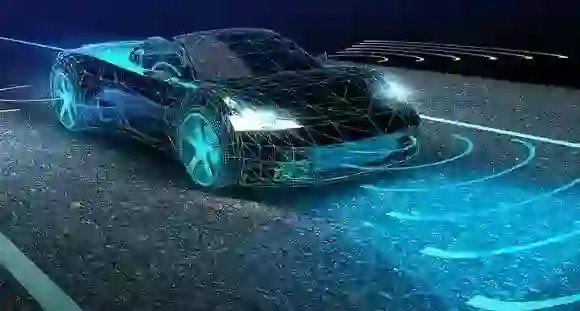Title: IoT Architecture: Understanding IoT
Introduction
From the last blog Exploring IoT Fundamentals, we have started our IoT journey. In that blog, we deep dive into what actually IoT is. We discuss some of the fundamental building blocks of IoT. We have also discussed the steps involved in the IoT. Now This blog we will discuss how the IoT ecosystem work by understanding the IoT architecture. After studying IoT architecture you are able to understand how data is generated, transferred, processed and used for application purposes.
Four Layer Architecture
In industry, there are some variants of IoT architecture. IoT architecture is made of different layers. There are Three layers, Four layers, and Five layers architectures of IoT. All these architectures are not so different from each other. The main concepts remain the same. We discuss Four-layer IoT architecture. The Three-layer IoT architect just merges two layers together and Five layer IoT architecture just splits a single layer apart. So four layer IoT architecture became optimal for studying and discussion.
Sensing LayerThe sensing layer is also known as the Physical layer and Perception layer. As the name suggests this layer has actual hardware. IoT hardware is nothing but sensors, actuators and controllers. This layer is close to the physical world. The sensors are used to collect the data from surrounding. The sensor converts the physical quantity into electrical signals. The Physical quantity can be temperature, Humidity, wind speed, Air quality, Minerals in water so basically any physical quantity that can be measured. Sensors are not self-sufficient to produce the data they just produce the electrical signal. This electrical signal is converted into an understandable format or conditions (data) using controllers. To take any physical action or to make any movement we need an actuator.
- Examples.
- Sensors: DHT11, LM35, MQ3, HCSR-04
- Controllers : ESP8266, ESP32, Arduino, Raspberry Pi
- We will look into various types of sensors, controllers and actuators in upcoming blogs. So sensing layer basically collects physical data
The collected data need to be sent from the actual location of the sensor to somewhere else where processing is done. Sometimes sensor nodes are communicating with each other for various reasons. To facilitate the communication between sensor nodes or to transfer the data Network layer is there. Network layers have lots of communication protocols that decide how the data should be sent or received. Whether it should be periodically or on change, whether it is broadcast or unicast. Depending upon the format of data communication protocol changes. These communication protocols are developed by a number of companies. Each protocol has some advantages and disadvantages over each others, so there is a tradeoff while using such protocols. Examples. MATTER, MQTT, M2M, Zigbee, LoRa
Data Processing LayerThe data collected at the sensing layer is the raw format, Often we are not able to use it directly. Data might be noisy and require calibration. There is a need for data processing. Data processing involves data processing and data analysis. Data processing involves Filteration, Aggregation and Transformation of Data. Data analysis involves Algorithms, Event detection, and Real-time decision-making using processed data. There are two different ways through which data processing can happen.
- Edge computing processing
- Cloud computing processing
When data processing is done locally on controllers like ESP32, ESP8266, and Raspberry Pi it is considered as Edge computing. While is data is transferred to the cloud where data is stored and processed it is considered as Cloud computing processing.
Application LayerFrom the processing layer, we get useful information and insights from processed data, this information is used for practical and real-life use at the application layer. t involves developing applications and services that enhance user experiences and drive business value. Applications and dashboards provide users with real-time insights and control over IoT devices. User interfaces can be web-based, mobile apps, or dedicated control panels. Applications and dashboards can be used to control and monitor IoT devices and data. Automated actions can be triggered based on data analysis. For instance, a smart thermostat adjusts room temperature based on occupancy and ambient conditions.
Conclusion
The Four-Layer IoT Architecture provides a structured framework for building and understanding complex IoT systems. Each layer combined together creates an ecosystem that seamlessly connects devices, processes data, and generates actionable insights. Understanding IoT architecture will help you understand how IoT is work and IoT products can be built.
MORE BLOGS

Changing Electric Vehicles with Embedded Systems: A Profound Jump into their Importance
Electric Vehicles (EVs) have arisen as a distinct advantage in the auto business, offering a supportable option in contrast to conventional gas-powered motor vehicles. The outcome of EVs, in any case goes past proficient powertrains and battery innovation; it vigorously depends on the coordination of state-of-the-art embedded systems. In this far-reaching article, we ...Read More

Difference Between Embedded System Programming & IOT Programming
Embedded system introduction : An embedded system implies a PC structure expected to do unambiguous jobs inside a greater structure or thing. It is a mix of hardware and programming parts that collaborate to give committed helpfulness. ...Read More

Use of Embedded Systems in Automotive Industry
Embedded structures expect a huge part in the auto business, engaging various capacities and features inside present-day vehicles. The following are a couple of basic reasons for embedded structures in the vehicle business: Engine Control Unit (ECU):...Read More
